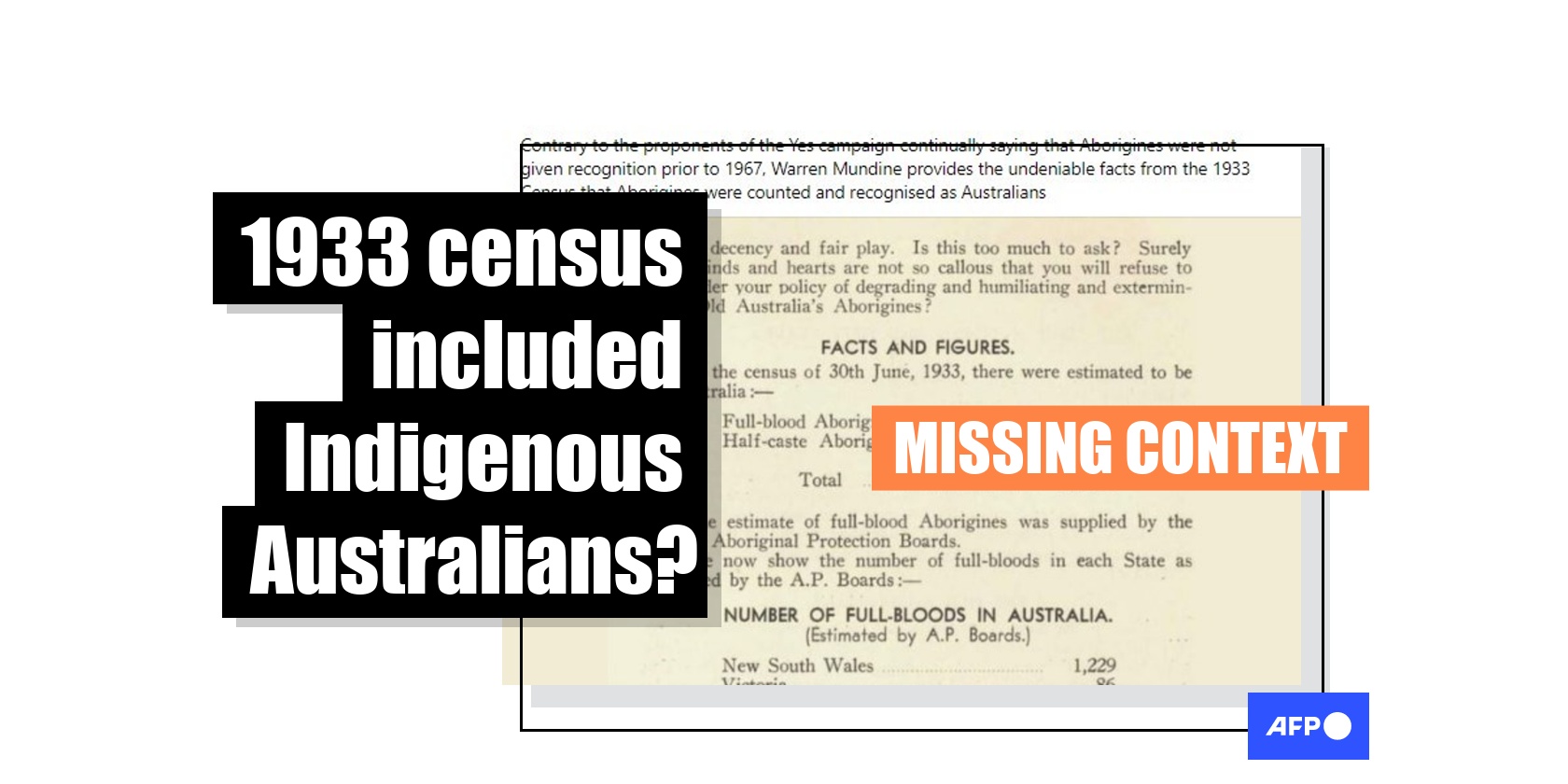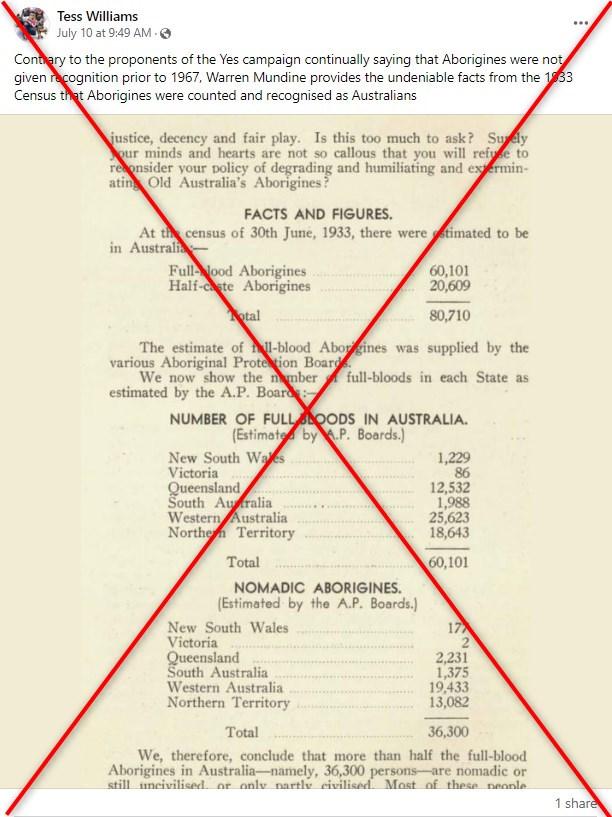
Misleading posts on Indigenous population census spread ahead of Australia referendum
- This article is more than two years old.
- Published on July 27, 2023 at 10:55
- 3 min read
- By Kate TAN, AFP Australia
"Contrary to the proponents of the Yes campaign continually saying that Aborigines were not given recognition prior to 1967, Warren Mundine provides the undeniable facts from the 1933 Census that Aborigines were counted and recognised as Australians," reads a Facebook post shared on July 10.
Nyunggai Warren Mundine -- a former politician and Aboriginal campaigner supporting a "No" vote -- has posted the same screenshot on Facebook and Twitter, which is being rebranded as "X". His posts have been shared more than 800 times.
The post appears to criticise those supporting a "Yes" vote in a referendum expected by year's end seeking to grant Australia's Indigenous population a dedicated "voice" in national policymaking.
It features a screenshot of what appears to be an old document that gives the estimated number of "full-blood" and "half-caste" Aboriginal Australians on June 30, 1933 as 60,101 and 20,609 respectively.

Similar claims have also been published in Facebook groups here and here with more than 4,000 members, urging people to vote "No" in the upcoming referendum.
However, these posts omit important context.
Misrepresented document
The screenshot in the misleading post is not taken from the 1933 census but was actually taken from a document released in 1938 titled: "Aborigines Claim Citizen Rights: A Statement of the Case for the Aborigines Progressive Association" (archived link).
The full document can be viewed here on Trove, an online library database owned by the National Library of Australia (archived link).
It issued a call for protest on January 26, 1938, when the country celebrated 150 years since the landing of the First Fleet that transported British convicts to Australia.
January 26 has been marked as the country's national day called Australia Day. But some parts of the country -- such as the Aboriginal Australian community -- consider the day as a "day of mourning" or "invasion day" (archived links here and here).
The word "Aborigine" is considered insensitive as it has "racist connotations from Australia's colonial past", according to Amnesty International (archived link).
Imprecise figures
Liz Allen, a demography lecturer at the Australian National University, said the 1933 census was imprecise with regard to the number of Aboriginal Australians as they were not fully counted in the tally.
Allen told AFP on July 11 that Aboriginal people were included in the census only "if they were employed by a European Australian or were in contact with or known to the state".
"Census collections until 1961 tended to capture only a fraction of Aboriginal people in mainland Australia," she said.
She added that the number of "full-flood" Aboriginal Australians in the screenshot did not represent census counts but were "estimations of people supplied by Aboriginal Protectorate Boards".
"These figures are provided by white men, potentially without any interaction with Aboriginal people, and with possible ill intent to hide the true figures," Allen said.
Moreover, actual 1933 census documents -- which show the same figures for "full-blood" and "half-caste" Aboriginal Australians as those in the misleading posts -- indicate the numbers had been "estimated" (archived link).
In contrast, a census counts "every person and household", according to the Australian Bureau of Statistics (archived link).
The bulletin said the report only gave the "estimated and recorded" number of "flood-blood Aboriginals" that were "civilized or semi-civilized" in employment or living in proximity to settlements.
"No attempt was made to obtain particulars concerning nomadic aboriginals," it said.
Census revamp
Censuses in Australia did not accurately reflect the precise numbers of Aboriginal people in the country until 1971 -- the first census held after Australia held a referendum in 1967, according to Allen.
In the referendum, more than 90 percent of voters favoured a constitutional amendment that allowed Aboriginal people to be counted as part of Australia's population (archived link).
A spokesperson for the ABS told AFP on July 12: "1971 marked the first time Aboriginal and Torres Strait Islander people were fully included in Census results."
According to the latest census in 2021, 812,728 people identified themselves as Aboriginal and/or of Torres Strait Islander origin (archived link), which represents 3.2 per cent of the total population.
AFP has debunked misinformation around the "voice" referendum here, here and here.
Copyright © AFP 2017-2025. Any commercial use of this content requires a subscription. Click here to find out more.
Is there content that you would like AFP to fact-check? Get in touch.
Contact us
